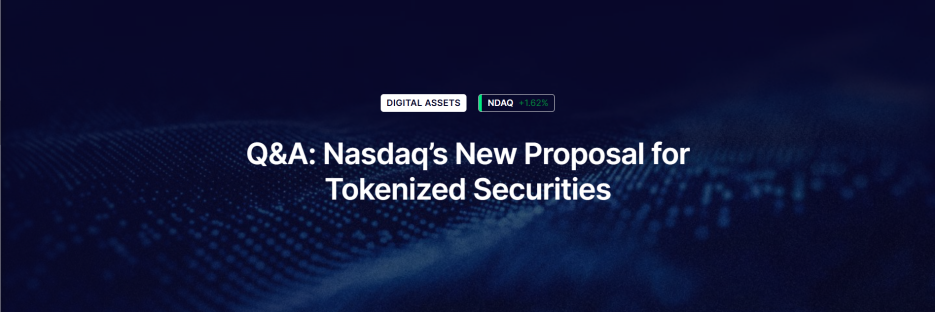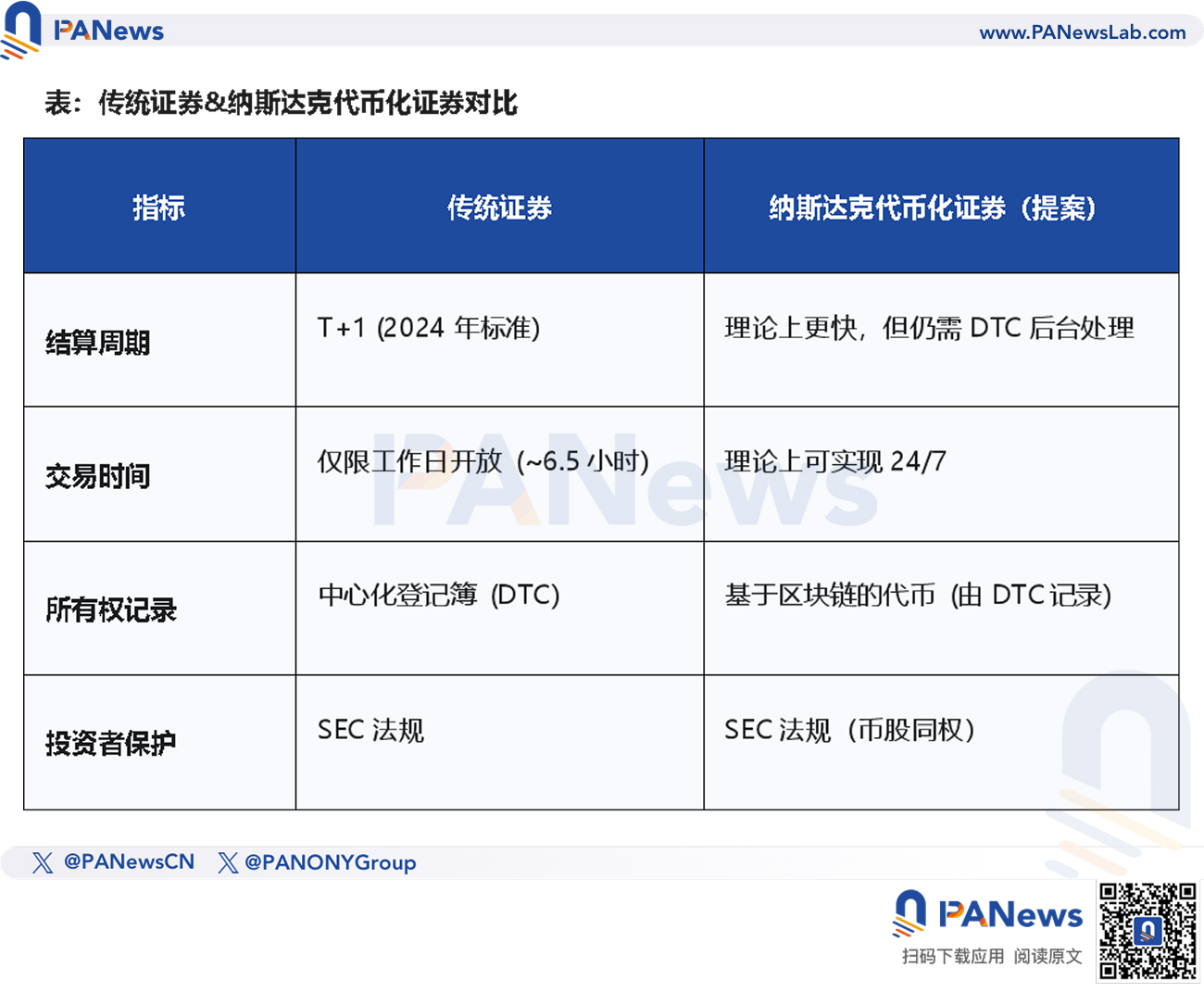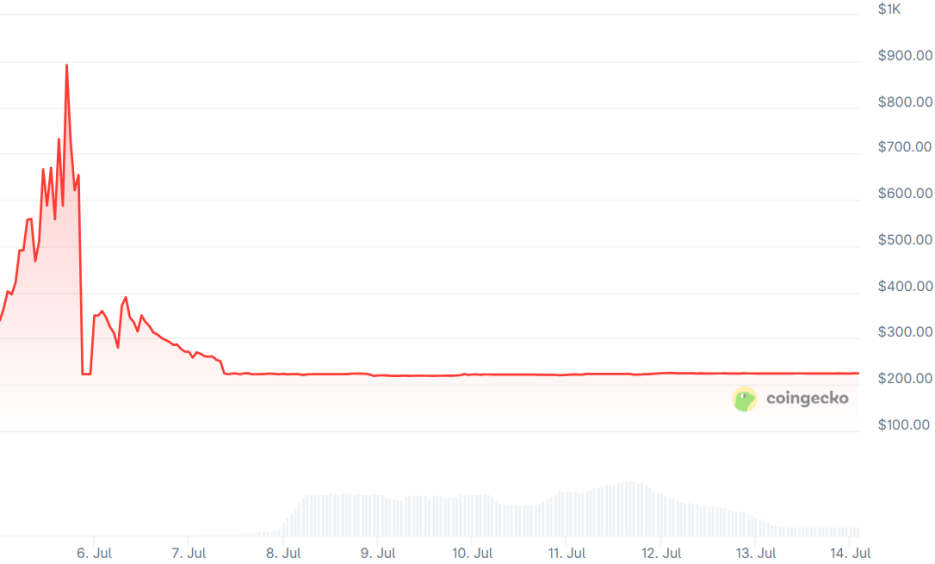Author: J.A.E, PANews
The traditional financial market in the United States is accelerating its transition to blockchain. On September 6, the U.S. SEC (Securities and Exchange Commission) and CFTC (Commodity Futures Trading Commission) proposed that traditional financial markets operate with "24/7" trading. Just two days later, Nasdaq decisively announced that it had submitted a rule change application to the SEC, planning to promote the trading of tokenized securities on its market. Blockchain technology, as a tool to enhance efficiency and increase transparency, will be integrated into Nasdaq's financial infrastructure.
The Core Focus on Post-Trade Clearing and Settlement
The core objective of Nasdaq's tokenized securities proposal is to allow its member firms and investors to trade stocks and ETPs in tokenized form within the market. At the same time, Nasdaq adheres to its consistent compliance standards, requiring that tokenized stocks must have rights that are fully consistent with the underlying securities, including the same CUSIP (Committee on Uniform Securities Identification Procedures) and shareholder rights, such as dividends and voting rights.
The innovation of Nasdaq's tokenized securities proposal lies in the post-trade clearing and settlement process. According to its operational mechanism, the trades themselves still occur within the market and follow its existing order execution and matching rules. Once a trade is completed, participants can choose to settle in traditional digital form or in tokenized form. If they opt for the tokenized method, the backend clearing work will be handled by the core clearing institution of the TradFi system—the Depository Trust Company (DTC), which is responsible for recording ownership as blockchain-based tokens.
Nasdaq empowers the DTC through blockchain technology to upgrade the existing system, revealing its defensive strategy: leveraging blockchain technology to enhance its traditional centralized system, forming a more technologically advanced and thoroughly controlled "trading market," thereby proactively addressing the challenges posed by the crypto-native tokenized stock market to its dominance. By incorporating tokenized assets, Nasdaq will continue to solidify its core position in the capital markets.

In fact, Nasdaq has been researching and investing in blockchain for a decade. It began using blockchain technology in 2015, developing the blockchain-based equity trading platform Linq and launching the blockchain payment processing platform ChainCore in collaboration with Citigroup; in 2018, Nasdaq adopted Azure blockchain technology to launch the Nasdaq Financial Framework system, providing blockchain services to over 100 market operators worldwide; in 2021, it launched the "Market Services Platform" to help clients issue tokenized assets.
A Subtle Shift in Regulatory Attitudes
The timing of Nasdaq's tokenized securities proposal submission coincides with a significant shift in U.S. regulatory attitudes. During the tenure of former Chairman Gary Gensler, the SEC tended to classify most cryptocurrencies as securities, with a strict regulatory enforcement approach that raised widespread concerns about "overregulation" in the industry.
However, on September 2, 2025, the SEC and CFTC issued a joint statement indicating that under current laws, regulated exchanges are allowed to offer trading of certain crypto asset spot products. This joint statement is part of the SEC's "Project Crypto" and the CFTC's "Crypto Sprint," aimed at providing a clear path for compliant blockchain innovation and encouraging the development of domestic fintech in the U.S.
Nasdaq's decision to submit its application at this time is both a response to the changing regulatory attitude and a proactive measure to adapt to technological advancements in response to the impact of on-chain trading.
As a highly regulated traditional financial institution, Nasdaq's tokenized securities proposal also provides regulators with an ideal "testing ground" to demonstrate that blockchain technology can be integrated into the existing system in a compliant and secure manner.

The "Dual-Sided" Effect of Tokenization
Proponents of tokenization believe that blockchain technology will trigger an efficiency revolution in the TradFi market, with core advantages including: 1) 24/7 Trading: Tokenized securities can achieve uninterrupted trading around the clock, freeing investors from the conventional time constraints of traditional exchanges, allowing them to react instantly to any news; 2) Higher Clearing and Settlement Efficiency: Tokenization can significantly shorten the clearing and settlement cycle from T+1 or even longer to T+0 (close to instant settlement), thereby greatly improving capital efficiency and reducing counterparty risk; 3) Lower Barriers to Entry: Theoretically, through asset fragmentation, tokenization can lower investment thresholds, allowing retail investors to participate in high-value asset investments with smaller amounts; 4) DeFi Composability: Tokenized securities can serve as "building blocks" in the DeFi ecosystem, such as being used as collateral in lending protocols, unlocking new financial application scenarios.
It is important to note that the innovation of Nasdaq's tokenized securities proposal lies in theoretically improving trading and clearing efficiency by integrating technology while being compatible with the existing regulatory framework, and does not necessarily mean that all of the aforementioned advantages will be fully realized.

However, there are differing voices in the market pointing out that the actual value of tokenization for individual investors is quite limited. First, mainstream online brokers have generally implemented zero-commission stock trading, and the T+1 settlement cycle is already sufficiently efficient for most retail investors. Second, tokenized stock trading carries inherent irreversible risks, and its legal protections remain in a gray area. Smart contracts also have limitations and are susceptible to hacking, which may not be able to address all unforeseen circumstances.
Additionally, there have been cases where the prices of some tokenized stocks have deviated significantly from the prices of the underlying securities. For example, the tokenized stock AMZNX, which tracks Amazon, surged to $891.58 on July 5, about four times the closing price of Amazon on the previous trading day, raising investor concerns about market manipulation and insider trading.

From a business perspective, Nasdaq, as a B2B platform primarily serving institutional clients, may not have individual investors as its true audience for the proposal. For traditional financial giants, a faster clearing and settlement cycle means higher capital efficiency and lower risk exposure. The underlying value of this proposal is more likely to optimize the underlying infrastructure to serve its institutional clients, while the "efficiency revolution" for retail investors is more of a marketing strategy.
One of Nasdaq's deeper motivations for submitting the proposal is to seize the initiative in the wave of tokenization and prevent the emergence of a tokenized ecosystem that is isolated from traditional markets and unregulated. By providing a trading platform that integrates blockchain technology while strictly adhering to compliance, it may become a major entry point and circulation hub for tokenized assets.
免责声明:本文章仅代表作者个人观点,不代表本平台的立场和观点。本文章仅供信息分享,不构成对任何人的任何投资建议。用户与作者之间的任何争议,与本平台无关。如网页中刊载的文章或图片涉及侵权,请提供相关的权利证明和身份证明发送邮件到support@aicoin.com,本平台相关工作人员将会进行核查。




